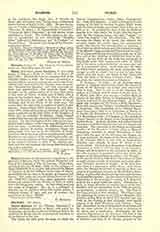

Diana, ANTONINO, moral theologian, b. of a noble family at Palermo, Sicily, in 1586; d. at Rome, July 20, 1663. He took his vows as a regular clerk of the Theatine Order in 1630. He became celebrated as a casuist while he was yet a young man, and cases of conscience were sent to him for solution from all parts. His “Resolutiones Morales” met with universal es-teem and approbation. The brothers Prost, who brought out the eighth edition of the first three parts of this work at Lyons, in 1635, sent it forth, with a play on the author’s name, as the Diana of him who might be hunting for truth in the woods of moral theology, and as the Diana of the cross-ways who would show the right path to anyone in doubt or perplexity. Popes Urban VIII, Innocent X, and Alexander VII, esteemed him for his learning, and he was made a consultor of the Holy Office of the Kingdom of Sicily and an examiner of bishops. Diana himself claimed that as a rule his solutions followed the milder opinion. On the frontispiece of the volume just mentioned round a figure of the Cross runs the legend Non ferro sed ligno. According to St. Alphonsus and the common opinion of modern theologians, Diana not infrequently went too far in the direction of laxity. However, his works may still be consulted with profit.
Besides several editions of the unabridged works, epitomes and compendiums of them began to appear even in the author’s lifetime, in spite of his vigorous protests that his real meaning was being distorted by his too ardent admirers.
T. SLATER

